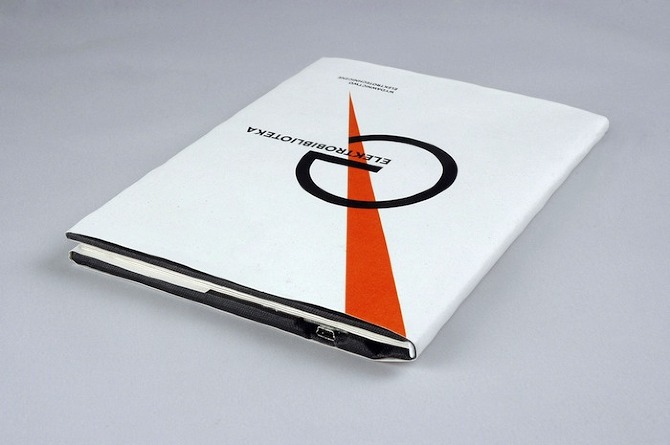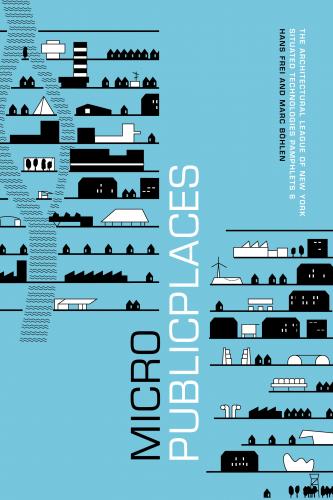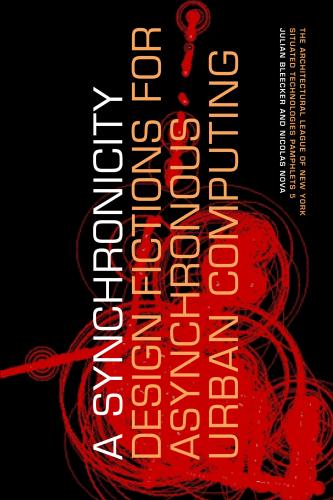Waldek Węgrzyn: Elektrobiblioteka / Electrolibrary (2012)
Filed under augmented book, thesis | Tags: · book, design, e-book, interactive design, interface

A hybrid book project inspired by El Lissitzky’s manifesto published in 1923.
Author: “I was interested in the phenomenon of a book perceived as a kind of interface, which has influenced the way we deal with information. I also wanted to shift the experience typical for print design to the field of digital media. One of the major inspirations was the manifesto ‘The topography of typography’ published in 1923 by a graphic designer El Lissitzky, who has expected a book to be replaced with something he called “electrolibrary”. It seems that his predictions came true.
The final result of the project is the paper book that can be connected to the computer via USB cable. It is able to physically detect which page is currently open and send that information to the Electrolibrary website. By turning pages or touching given illustrations you can navigate through the website and get additional information such as hyperlinks, quotations, movies etc. Of course you can also unplug the cable and read it like a normal book.
The book was intended to be a single object, just for presentation. The great interest in my project that I encounter surprised me. I did not expect that at all, so maybe this project can be developed further.” (source)
Diploma thesis
Multimedia dept, Academy of Fine Arts, Katowice, Poland
Supervisor: Bogdan Król
via Jono van Belle
demonstration video
Lissitzky’s manifesto
View online (HTML) [Polish]
Comment (0)Marc Böhlen and Hans Frei (eds.): Situated Technologies Pamphlet 6: MicroPublicPlaces (2010)
Filed under pamphlet | Tags: · architecture, city, interactive design, labour, life, situated technologies, ubiquitous computing, urban computing, urbanism

In response to two strong global vectors: the rise of pervasive information technologies and the privatization of the public sphere, Marc Böhlen and Hans Frei propose hybrid architectural programs called Micro Public Places (MMPs). MPPs combine insights from ambient intelligence, human computing, architecture, social engineering and urbanism to initiate ways to re- animate public life in contemporary societies. They offer access to things that are or should be available to all: air, water, medicine, books, etc. and combine machine learning procedures with subjective human intuition to make the public realm a contested space again.
Series Editors: Omar Khan, Trebor Scholz, Mark Shepard
Publisher: The Architectural League of New York
PDF
Get a printed copy from Lulu.com.
Julian Bleecker and Nicolas Nova (eds.): Situated Technologies Pamphlet 5: A synchronicity: Design Fictions for Asynchronous Urban Computing (2009)
Filed under pamphlet | Tags: · architecture, city, interactive design, internet of things, labour, life, situated technologies, ubiquitous computing, urban computing, urbanism

In the last five years, the urban computing field has featured an impressive emphasis on the so-called “real-time, database-enabled city” with its synchronized Internet of Things. Julian Bleecker and Nicholas Nova argue to invert this common perspective and speculate on the existence of an “asynchronous city”. Through a discussion of objects that blog, they forecast situated technologies based on weak signals that show the importance of time on human practices. They imagine the emergence of truly social technologies that through thoughtful provocation can invert and disrupt common perspectives.
Series Editors: Omar Khan, Trebor Scholz, Mark Shepard
Publisher: The Architectural League of New York
PDF
Get a printed copy from Lulu.com.

